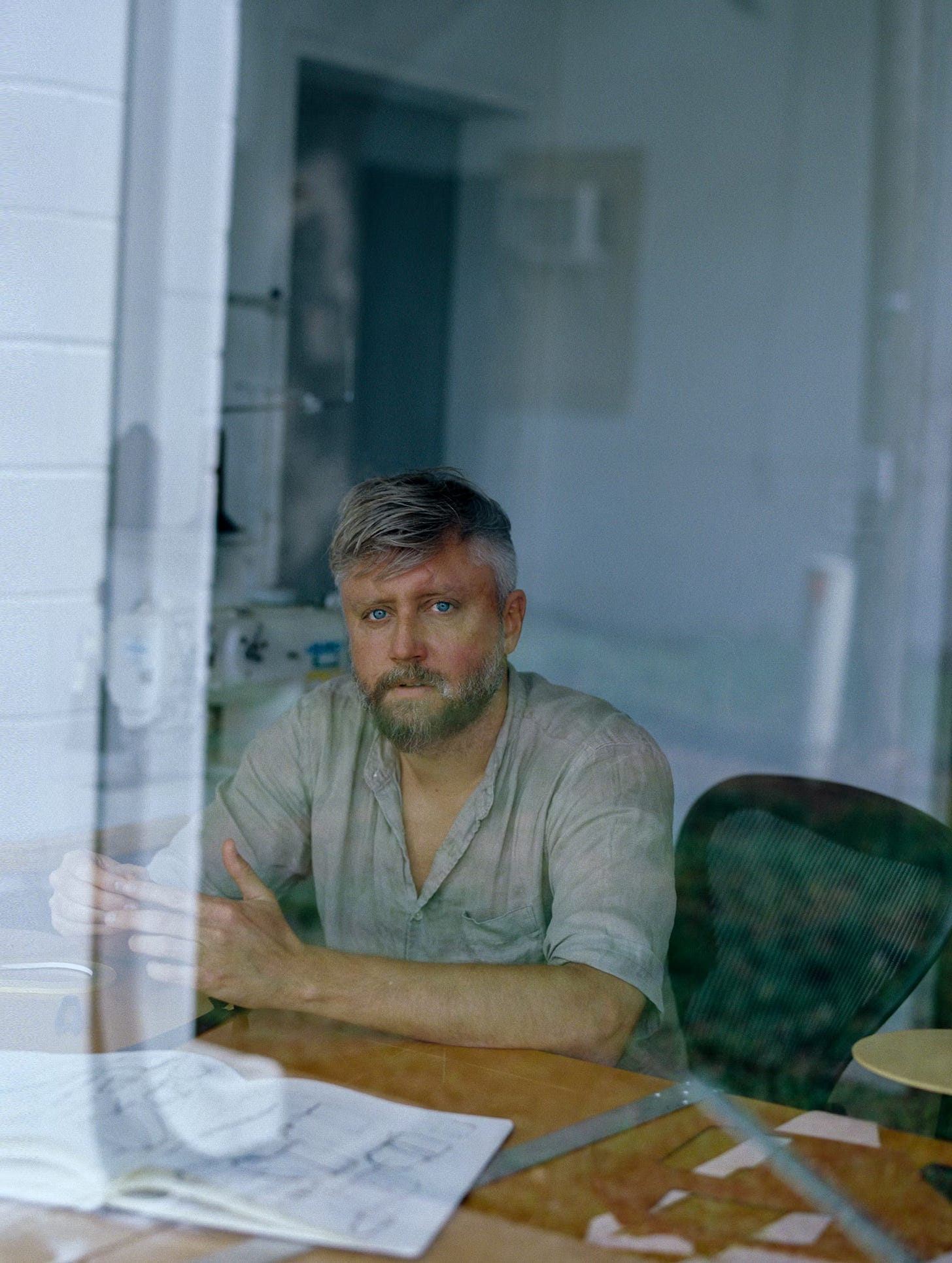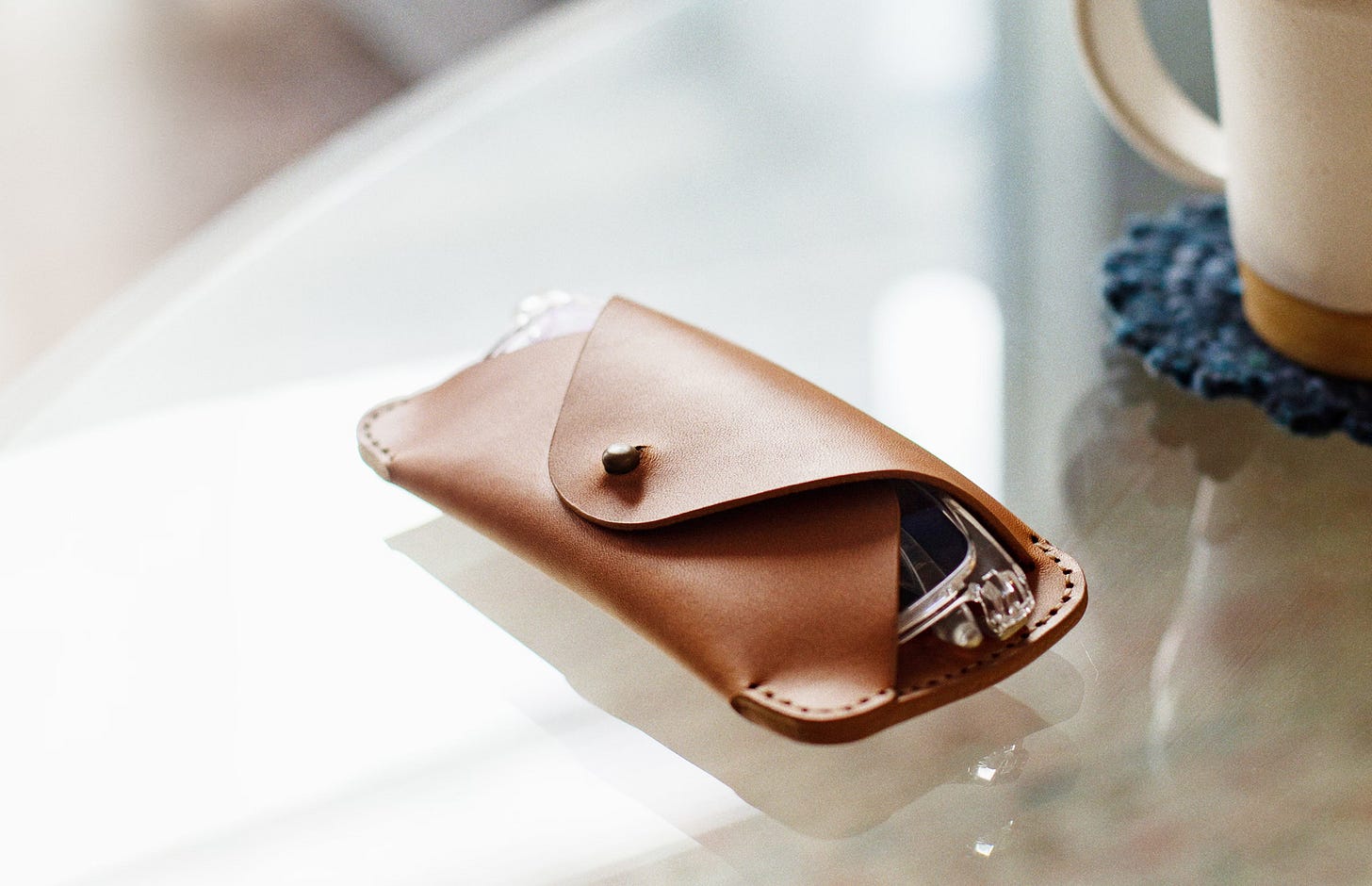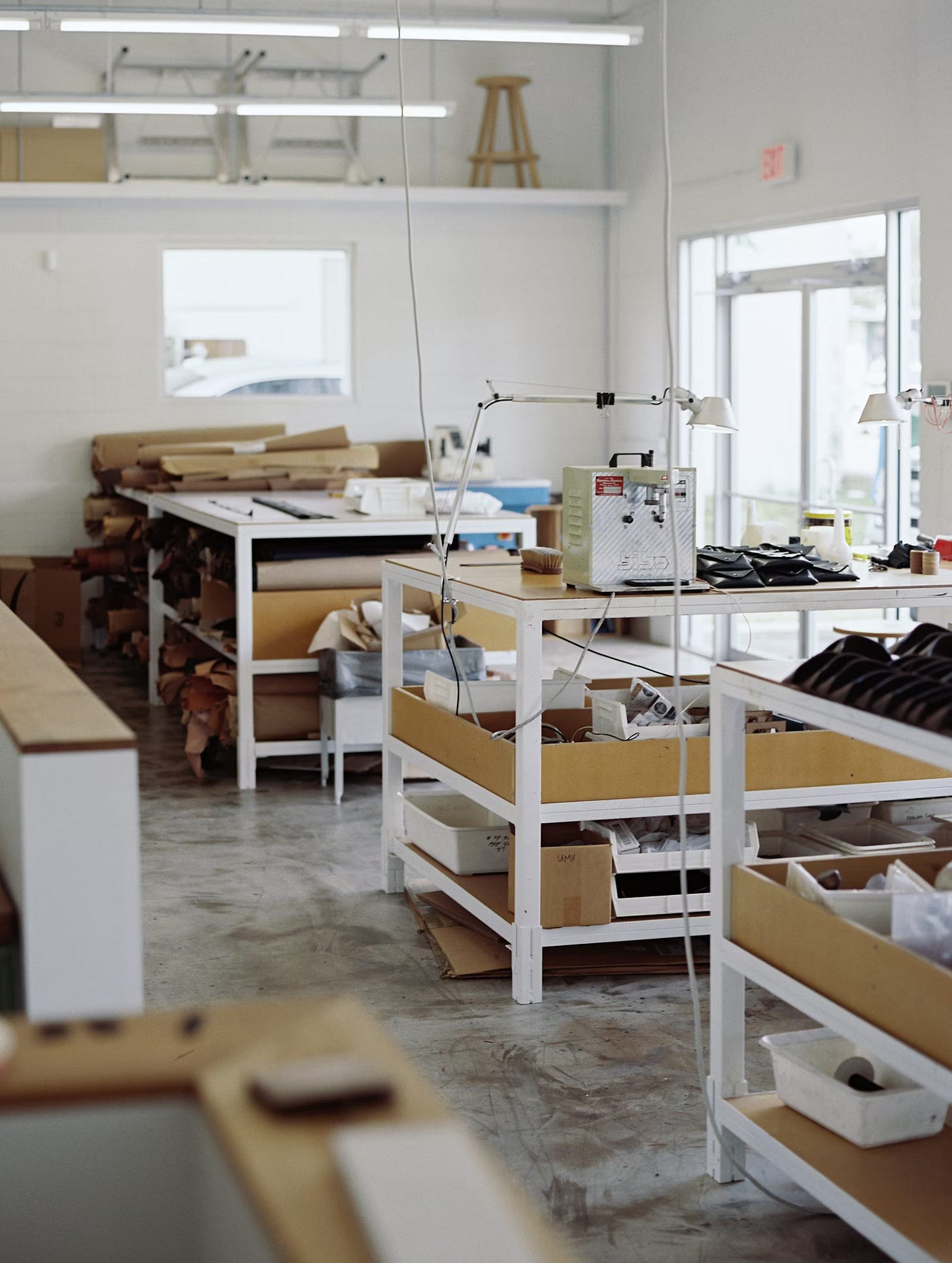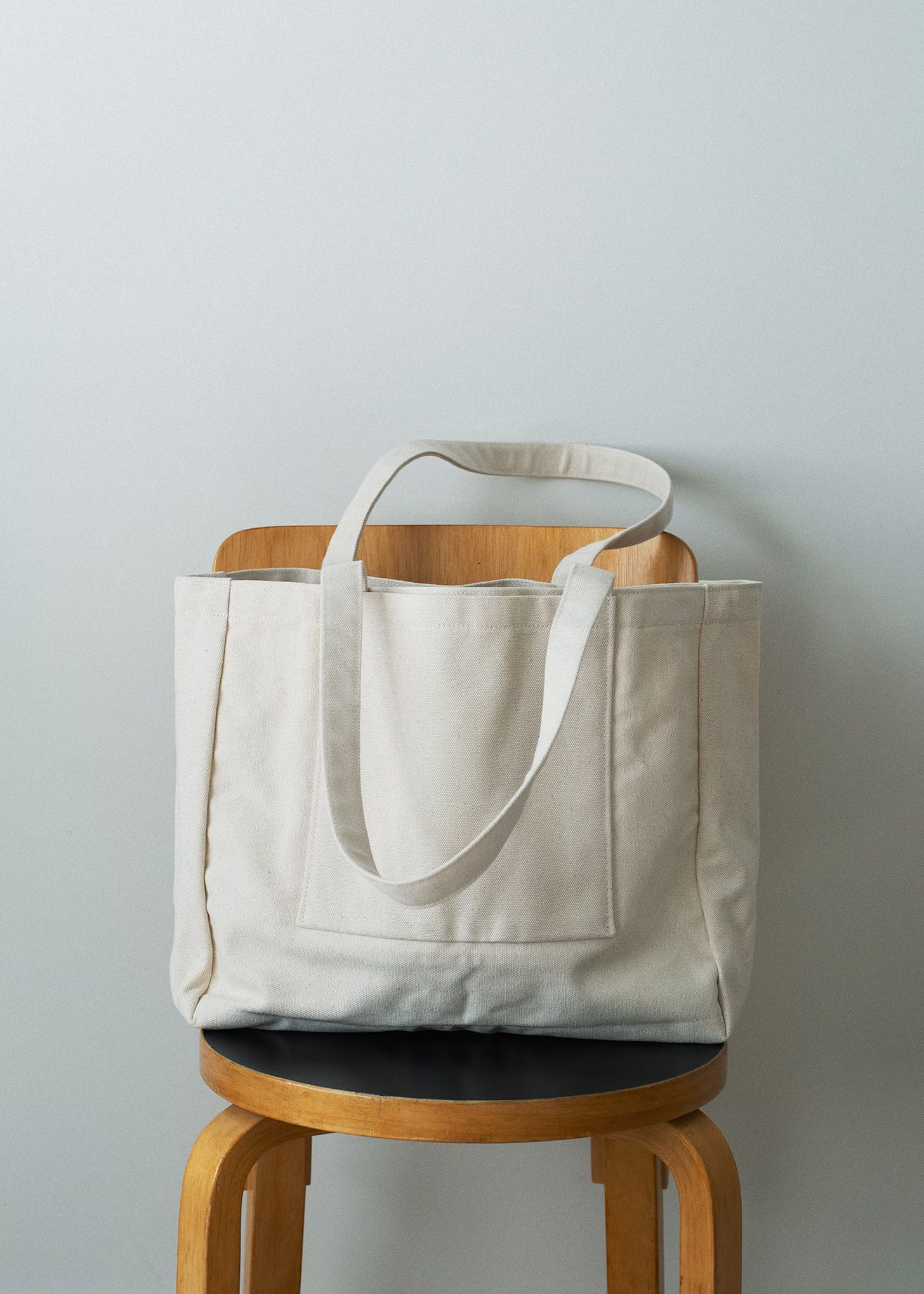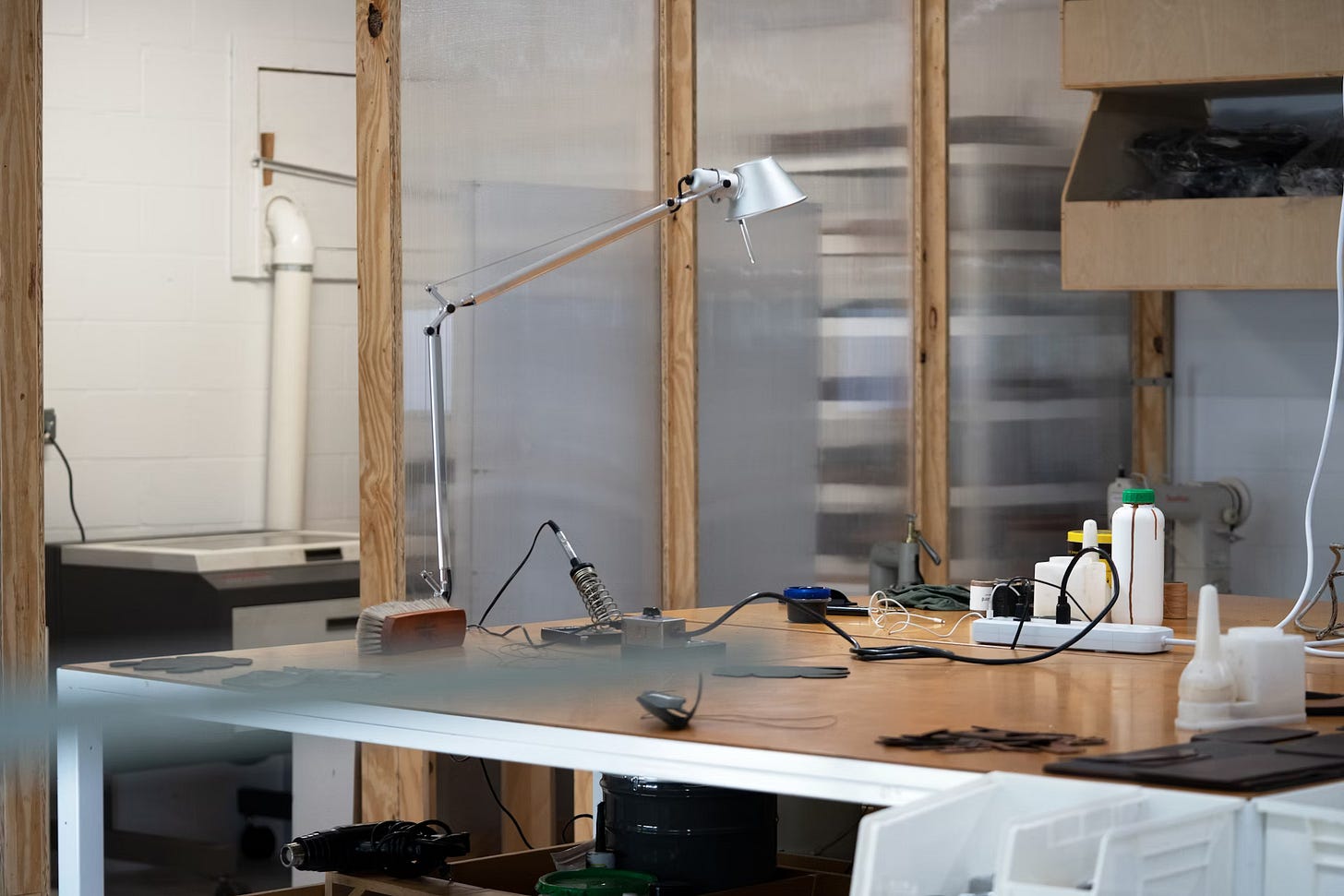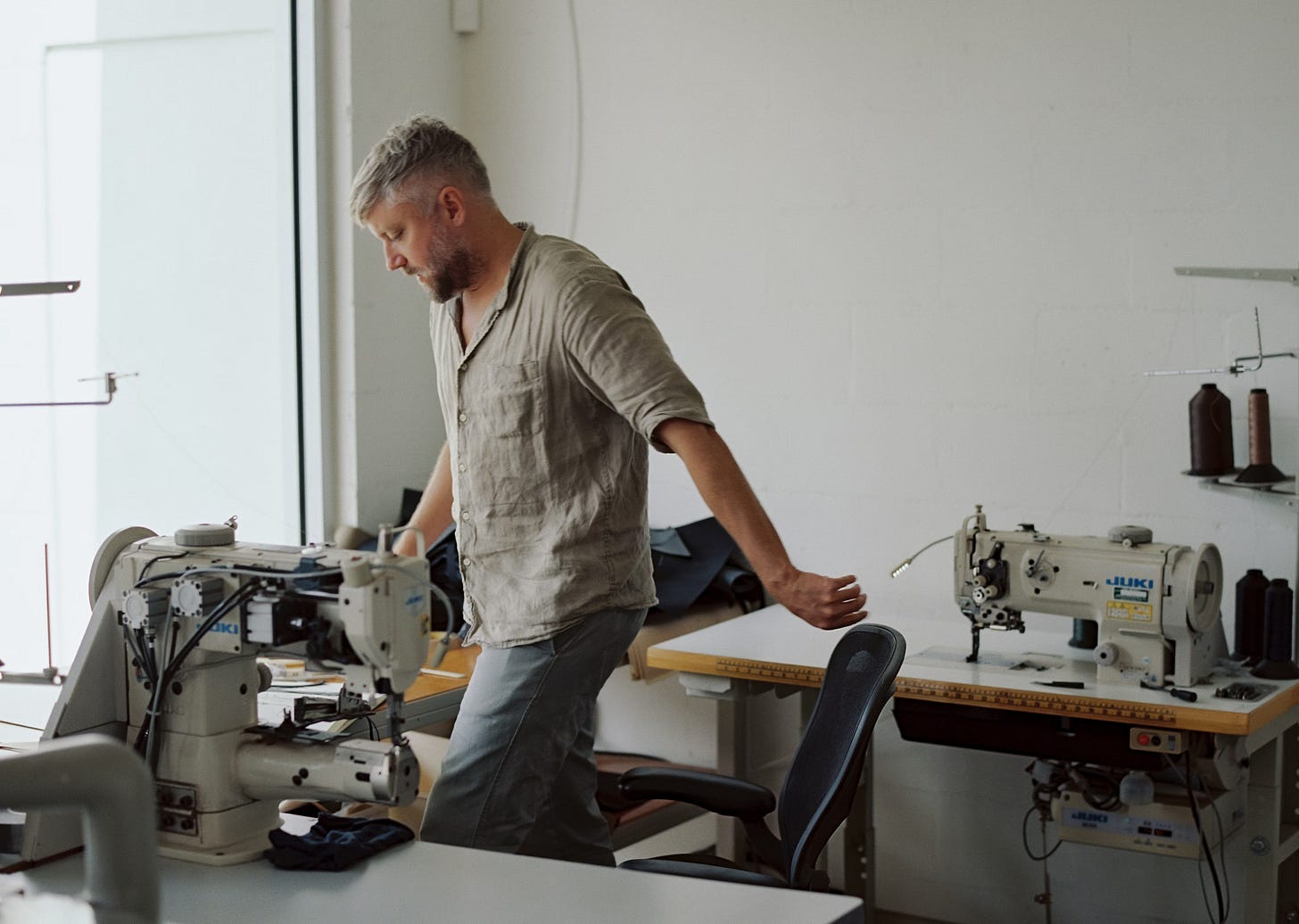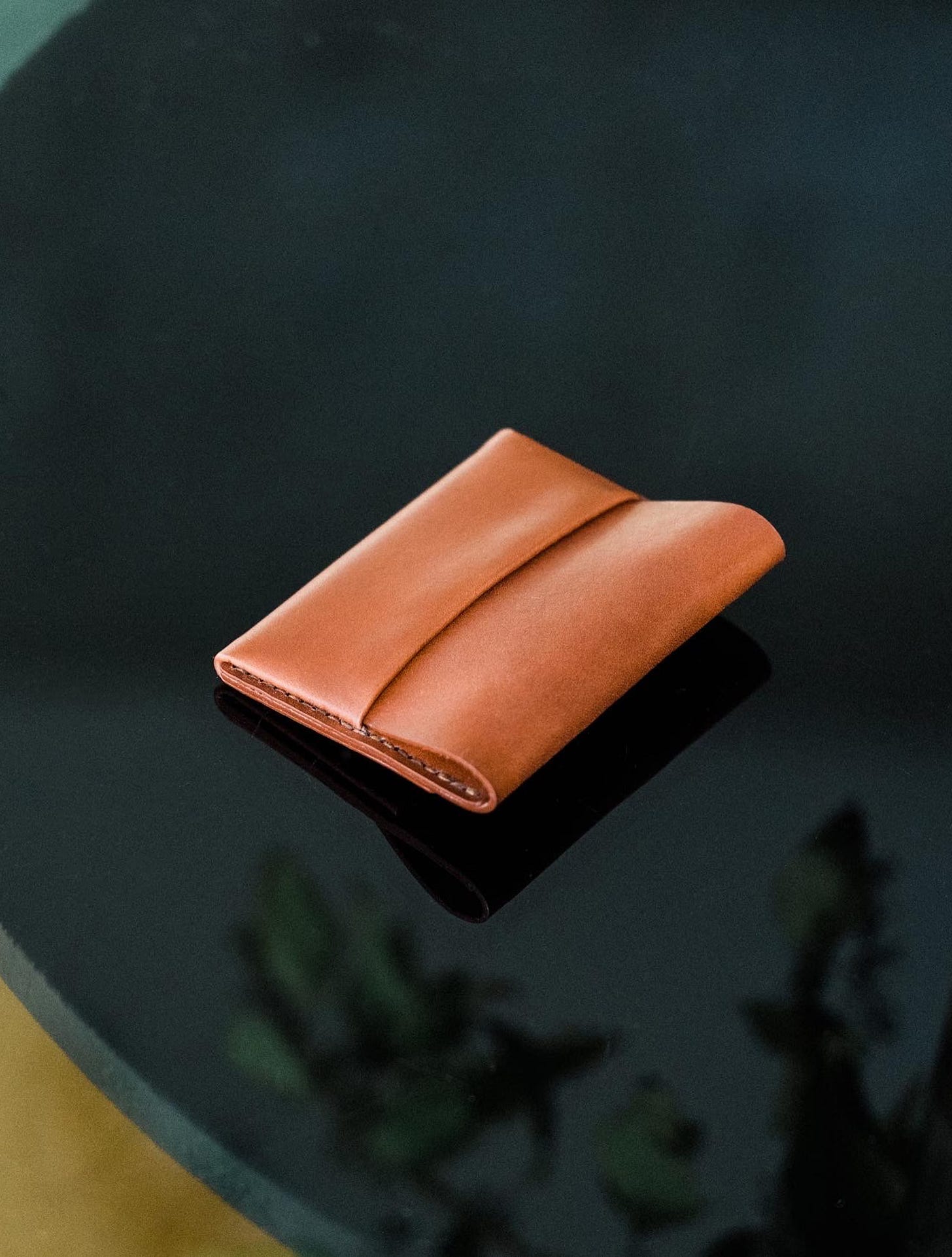Making leather goods in America
A conversation with MAKR's Jason Gregory about making leather goods and utilitarian products in the USA, his personal design philosophies, and being in it for the long haul.
The best American leather goods brand is in… Florida?
You’ve probably seen Jason Gregory’s face a bit more these days—and have undoubtedly come across his hand-sewn leather wallets, heavy duck-cotton totes, and wood-and-steel stools through his brand, MAKR, known for handcrafted and understated utility objects.
While working at an architectural and branding firm, Gregory grew tired of the long project lead times (some of which are only now coming to life).
“I wanted to actually make things and get them out into the world,” he tells me.
During his corporate years, he spent time in the model shop and got hooked on the CNC laser cutter. “I became obsessed with pattern-making and translating 2D designs into 3D objects”—an obsession that led to the early MAKR projects. As the work kept growing, he officially launched the brand in 2007.
It’s clear that all the products he works on serve a purpose—carrying things, offering a seat, holding books, creating spaces to eat or live. “I’m inspired by how people live, eat, and play—permaculture, food forests, alternative dwellings, riding bikes, swimming, being outside,” Gregory says.
Because what’s the point of having things if they can’t be used in real life, right?
With his products leaning heavily toward minimalism, that’s no accident. “I begin by stripping away what’s unnecessary, isolating the essentials, and pushing them toward something more innovative or beautiful,” he tells me.
We sat down with the Florida-based designer to talk about:
Balancing aesthetics with utility
What it takes to build a Made-in-USA brand
How he’s sustained his business over the years
Why relocating his studio helped unlock a new phase in his creative process
+ more!
Tap in.
MAKR began as a side project while you were working at an architectural/branding firm. Can you share more about that transition and how your background influenced the brand's evolution?
I worked for an architecture “think tank” in its many iterations for almost seven years, but by the end, I grew tired of “paper architecture.” Corporate projects took so long—I’m just now seeing things we worked on 20 years ago come to life.
I wanted to actually make things and get them out into the world.
During those years, I spent time in the model shop and got hooked on the CNC laser cutter. I became obsessed with pattern-making and translating 2D designs into 3D objects.
That led to early MAKR projects: laser-etched artworks, furniture, small leather goods, and canvas bags—and the work kept growing.
Since 2007, I’ve led the brand, managed our studio, and built a woodshop where we’ve crafted custom retail fixtures and furniture for clients like Google, Tinder, Converse, and Nike, as well as restaurants and stores across the country.
The core of the brand—of the project, of me—has always been the same: to explore ways of making, to learn, and hopefully to have someone want what we create. While we’re best known for accessories, we’ve made all kinds of things over the past 17 years.
It’s been challenging, but incredibly rewarding.
You've emphasized the importance of creating products that are both beautiful and functional, focusing on solving problems. How do you balance aesthetics with utility in your designs?
The products I work on serve clear functions—carrying things, offering a seat, holding books, creating spaces to eat or live. I begin by stripping away what’s unnecessary, isolating the essentials, and pushing them toward something more innovative or beautiful.
I aim to achieve multiple goals with a single gesture—linking parts in interesting ways or using processes and machines to make something new.
My focus is on inventive pattern-making, new production methods, and design features that seem impossible—until the right sequence brings them to life. I build a palette of details and explore where they apply, often creating a cohesive family across products.
I love when everything comes together smoothly—when production feels effortless. I have a sense of how things should look and constantly search for ways to turn flat materials into sculpted forms.
In every object, I’m chasing a certain flow, a calmness—and really, that’s what I’m after in all of my work.
Sourcing quality materials is a known challenge. Can you discuss your approach to selecting materials and any memorable experiences in finding the perfect components for your products?
We've worked with our primary factory—a high-tech operation with 400+ employees—for over 16 years. They help source materials and hardware, and their buying power and warehousing access let us lower costs and meet minimums.
We intentionally limit our material types to boost efficiency and give fabricators time to master them. Our leather still comes from trusted longtime suppliers who know what we like and often share new developments.
Visiting Horween Leather is always mind-blowing, but our most memorable sourcing trip was for Domestic Cotton Duck. We aimed to develop custom finishes, reduce the material’s footprint, and meet as many raw goods suppliers as possible.
Most domestic mills avoid #8 Duck due to the thick yarn—it forces them to slow their looms. After multiple calls and visits, we found two vendors who could weave and dye the American-grown yarn to our specs.
Their massive, hidden-in-plain-sight facilities were wild—you never know what's being made just down the block.
I think time in factories has deepened my understanding of people—and maybe even made me a better person.
Starting with traditional craftsmanship and integrating technology like CAD and CNC cutting have been part of your process. How do you see the relationship between traditional techniques and modern technology in your work?
I was really interested in the technology aspect before focusing on craft. Form and pattern-making have always been—and still are—what I find most interesting.
But I realized early on that those elements can’t shine without beautiful craftsmanship. That’s why I now make the prototypes for all our soft goods before they head to the factory or into studio production.
Balancing “technology” with the right amount of “hand-crafted” is my main goal. All our “V2” products are cut using MIND software, which pairs with a camera-linked ZUND cutting table.
We’re hitting up to 78% material efficiency—a huge step in waste reduction and product efficiency.
Once cut, pieces are hand-edge painted, debossed, CNC-sewn, and hand-finished. So many hands are involved that “automation” feels misleading. A sewing machine might follow a pattern, but it still fails if not loaded right.
The shift in skill sets lets differently skilled people step into roles that used to be purely technical—a win-win.
My process starts with hand sketching and quickly moves into parametric CAD for easy pattern manipulation and rapid prototyping. I also use a method where 3D models unroll into flat patterns—seam allowances, notches, folds, and all—which helps relieve refinement fatigue and get products exactly where I want them.
I’m admittedly obsessive about that.
I am not only designing the products but also the fixtures and production sequences. It’s a far cry from just making a tech pack and sending it off. Every detail is intentional—sometimes down to the stitch count. I'm glad this level of care is becoming more common.
You've mentioned being inspired by intensely personal projects and the way people live their lives. Can you elaborate on how these inspirations manifest in your designs?
While I appreciate product-obsessed people, I’m not one of them—things stress me out. My goal isn’t to carry on a tradition but to isolate something for my collection and push it to a place I’m proud of, maybe highlighting a detail I’ve been developing.
I’m inspired by people who make things and their studios, so I’d love to design studios myself.
I’m inspired by how people live, eat, and play—permaculture, food forests, alternative dwellings, riding bikes, swimming, being outside. It’s about the beauty of navigating the world—what some might call “style,” though it’s more than that.
Words meant to describe this “pureness” have been ruined. I don’t need the “perfect muse” and enjoy the mess of it all, keeping notes on what strikes me, especially the smaller, quieter moments.
My design work reflects the aesthetic groove carved into my mind, aligning “a thing” with the feeling or frequency I’ve always carried.
Reflecting on your journey with MAKR, what have been some significant challenges, and how have they shaped your approach to design and business?
Every second is a challenge—hahaha! Honestly, I don’t know how anyone does anything! One of my biggest challenges is wanting to be hands-on, but time is limited.
I often get caught in the details, where interesting ideas and partnerships emerge, but balancing that with the bigger picture is something I work on daily.
On the business side, domestic manufacturing is expensive, and competing with offshore, low-cost production is tough. It usually means lower margins, but we make it work. As a small, independent company, we don’t produce massive volumes overseas, and our strong relationship with our factory has been key to our longevity.
The good news is, I still love it—working, making, solving problems, designing, and taking photos.
These are the core elements of the project. I named it this way to understand every aspect of product development and to make, not just design.
The term “maker” may be overused now, but it’s still central to what I do.
How does St. Augustine influence your creative process and the ethos of MAKR?
I moved to be with my partner—we’d been together nearly eight years but had never lived in the same town.
Over time, St. Augustine began to feel more like home than where I was. Leaving my previous studio and incredible team was the hardest part, but after much thought, I knew it was the right move.
Relocating the studio has reset me completely. I’ve found a new vision for what MAKR is—and could be.
I’m more inspired than ever, and the smallness of this town has sharpened my focus. The ocean means a lot to me, and living near it has made my life better in every way. That sense of well-being has naturally flowed into my work.
Plus, I drive a lot less now, which is a nice bonus.


